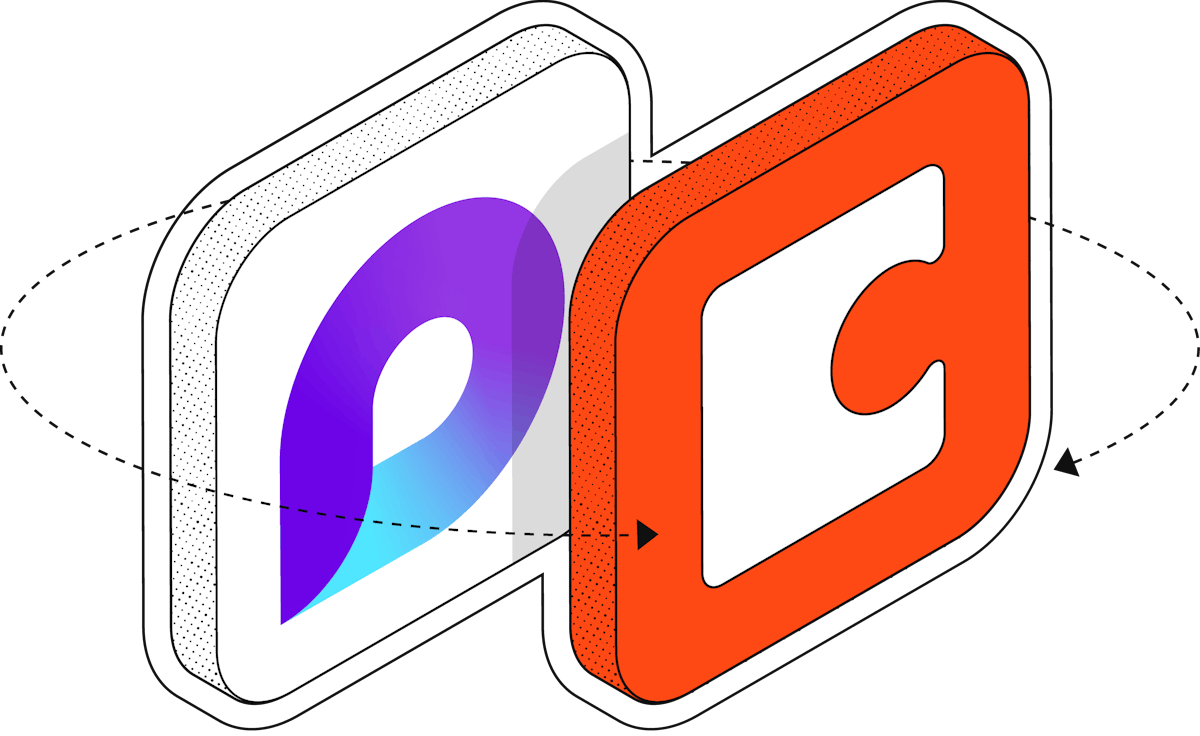Why teams prefer Coda to Microsoft Loop
A side-by-side look into using Coda and Loop for high-performing teams.


Todd Cranston-Cuebas
Solutions Architect at Coda
Overview: Coda and Microsoft Loop.
Coda is an all-in-one collaborative workspace that hosts anything you need to do your job in one seamless doc. That means a single source of truth for data, text, meeting notes, integrations, and more, so you can be set free from the endless need to jump back and forth between made-for-purpose tools. Loop is Microsoft’s answer to a digital workspace and, at first glance, provides an all-in-one doc experience similar to Coda. Mostly out of curiosity, and as someone who is passionate about tools which enable people to enhance how they get things done, I decided to check out Loop. From the start, I was impressed with Loop’s clean UI/UX and how easy it was to onboard and play around on the platform. but I soon noticed that in terms of overall functionality, my options were quite limited. Because of these limitations, Loop cannot replace the functionality found in Microsoft 365’s core applications like Word and Excel. In terms of similarities, both Coda and Loop enable teams to create flexible documents that incorporate various content types, such as text, tables, and media. The two platforms also provide functionalities for task tracking and integrations to pull in data and streamline workflows. While there are commonalities, many are surface-level and there are enough details that affect the day-to-day experience that make it easy to differentiate between the two.
Coda

Loop
Building docs: Ideate and create in an all-in-one platform.
Let’s start with the basics—with the foundational building blocks needed in any workspace tool. When it comes to creating in Coda, doc makers can build custom docs and bring their pages to life from canvas and table-based controllers (buttons, date selectors, etc.) to automations, calculation builders, and more. So when we say Coda is an all-in-one platform, we mean it quite literally. On the other hand, building capabilities has its limits in Loop and prove to be far less flexible in its workspace compared to Coda. In Loop, you can set up a new workspace to organize content and link components with other Microsoft 365 apps (like Teams, OneNote, or Outlook), as well as share and track changes with others. When you add a link page in a Loop workspace, it functions exactly as that—a link. In contrast, Coda allows you to add an embedded page that displays a fully functional and visually appealing version of the linked document. So while Loop’s simplicity makes it easy to move around within the space, when compared to Coda’s vast abilities to automate, integrate, and be creative, it’s clear that simple doesn’t necessarily mean better.Build from custom docs or templates in Coda's all-in-one workspace.
Build from scratch using basic functions on Loop's platform.
Pure collaboration: Streamline projects with your teams and beyond.
It’s no secret that the best projects take teams of dedicated colleagues, so our digital workspaces need to facilitate deep collaboration. Loop is solidly collaborative if you work within its ecosystem. That means you can create a table for team feedback and share it as a component in Outlook or Teams, allowing edits directly within those platforms, with changes reflected in the original Loop table. And while I can appreciate the synergy built in Loop’s ability to “talk to” its Microsoft counterparts, even at its best, it’s clear that Loop is currently not a tool that can replace Word, Excel, or PowerPoint. But Coda can. In Coda, you can seamlessly integrate images, videos, links, PDFs, and tables inline with text, making it a versatile tool for word processing, project tracking, and brainstorming with real-time collaboration. It connects data from various software into a shared space, allowing you to create specialized views and build interactive documents that communicate with each other and other apps, including Microsoft 365. That’s because Coda is designed to play well with teams who base their work in Outlook, Gmail, or any other system, and docs can be shared endlessly. It’s a truly versatile system that works well with anyone.Seamlessly integrate, automate, and collaborate in Coda.
With Loop's limited integration capabilities, you will need to "click out" and rely on other tools.
Best in integrations: Unite your favorite tools in a single source of truth.
Integrations are where sharing and permissions level up. When it comes to embedding third-party tools, Coda offers powerful data integration through sync tables, which synchronize data between an external tool and your doc table. With Packs, Coda integrates with over 500 SaaS products including Slack, Salesforce, Jira, Figma, and Gmail, making it a true data hub for your organization. This feature is also prevalent in Loop, offering a smaller option of third-party integrations like Jira and Trello—although not to the same extent as Coda. For example, Loop can sync with only 100 Jira issues, while Coda can sync with thousands, making it far more versatile and valuable for real-world applications. This is a huge difference between the two platforms. As a Solutions Architect, easy integration with communication, design, sales, and issue tracking software is incredibly important. It means your work is inherently less fragmented and that your day-to-day tasks can be checked off infinitely more efficiently. And Coda ensures you get there quickly.With 500+ SaaS integrations, you can connect tools like Jira so that when you make an edit in Jira that change will be reflected in Coda as well, and vice versa.
Table talk: Utilize structured and unstructured data.
Both Loop and Coda can host your structured and unstructured data, using tables to impose structure, with each table typically storing data about a specific category and each row representing an instance within that category. Loop’s tables are limited to nine column types and only allow for basic summary calculations, meaning you’ll find yourself switching back and forth into a different tool like Excel. Creating Coda docs is about crafting unique, tailored views of your underlying table data. Each “base” table allows you to add details, numbers, notes, status, and more that can derive into multiple views for more diverse presentations and visualizations of your data. This is also where I found that the capabilities of Loop ends...that is, with a very basic, simple table. In Coda, you can link tables like “Projects” and “Risks” using a “Relation” column, which allows you to easily view and report on all associated risks. By adding a “Teams” table, you can generate reports specific to your team’s projects and their risks. This capability showcases Coda’s strength in handling complex, real-world applications, surpassing Loop’s standalone tables.In Coda, your data is connected. Tables talk to each other and edits show up everywhere, surpassing the capabilities in Loop’s standalone tables.
Ready, set, automate: Experience workspace flexibility and freedom.
If your online collaboration platform doesn’t cut down on your admin, what’s the point? If you’re left copying and pasting the same requests for updates, your software isn’t worth its weight. Automating busy work means freedom. That’s one thing I love about Coda’s automations—it’s almost infinitely flexible. Automations can be built using simple selectors, but experienced Coda doc builders can create automations with Coda’s formula language. When people think of automations, they often stop at alerts or notifications. Of course, Coda’s automations can send messages, but they can also trigger actions. Actions include making changes to tables and data within tables, updating on-page controller values, pushing buttons in tables or on the page, and even using Coda’s Pack integrations to trigger actions connected from third-party tools. Loop, simply put, isn’t known for its automations. Since the platform’s collaboration capabilities are centered around Microsoft apps, so are their automations. You can set a table to notify you if something is updated within a specific range in a specific column. But in my experience, it leaves you wanting a lot more.Coda's automations are infinitely flexible and go far beyond standard alerts or notifications.












